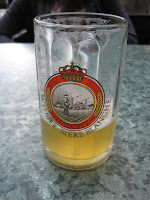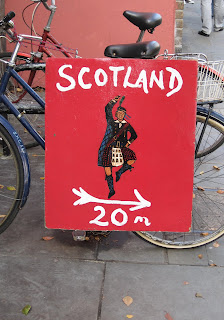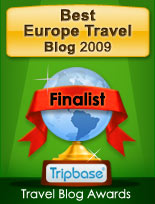
There's something simplistically thrilling about riding a train. You zip along, gaze at the changing landscapes that fly by, and pull into a grand, airy, bustling station when you reach your destination. It has an air of old-fashionedness to it, which makes it fun and filled with nostalgia. Not to mention the lack of hassles that come with other forms of transportation (I'm talking to you, airplanes). Of course, there are plenty of ways a train ride can go terribly wrong. It's not all comfort and romance, and great adventure. Eight years of European train rides have gifted me a laundry list of horror stories, from puking in a tiny, sideways-rocking bathroom to not sleeping in a cramped, sweaty sleeping car. Luckily, practice makes perfect, and with a few tips and tricks I've picked up along the way, I think I'm pretty close to having train travel down to an art. Here are my dos and don'ts for how to ride the rails - in style - in Europe.
Do pack light. Other than a few luggage racks at the end of each car, there's usually only room for your suitcase on the shelf above your seat.
Do dress comfortably chic. Riding a train, especially a high-speed one like the TGV in France, has a bit of glamour to it. I enjoy the trip most when I'm wearing something between a business casual and pajamas.
Do be prepared for scary bathrooms. They're different everytime, but I've seen bathrooms with no running water, with toilets that open up to the tracks, and with smells so bad I had to Febreeze my entire body to get them off. The high-speed trains tend to be nicer, but take care with the regional ones. A bottle of Purell and some toilet paper in your suitcase helps.
Do visit the train bar, but
Don't buy anything. The bar is a great place to stetch your legs and people-watch. Too bad the food and drink are sub-par and exhorbitantly expensive. Pack your own snack, saddle up to a table in front of the expansive windows, and daydream as you watch the countryside roll by.
Do keep yourself open to conversations with your neighbors. I'm usually the bury-my-nose-in-my-book type, but I've had a number of wonderful conversations with strangers on trains. Something about that form of transportation just begs for friendly chit-chat.
Do get your hands on some metro tickets in advance if your destination city in Paris. When a train full of people tries to use the scarce ticket machines at the same time, the line becomes unbearable. Have one already tucked away so you can arrive like the locals and not like the tourists.
Don't go to the station early. Train stations can be beautiful and exciting, but they're often not very pleasant places for just hanging around. And if you arrive too early, your train likely won't be at the platform yet. Unless you're taking Eurostar, there won't be any security or lines. 15 - 20 minutes in advance is plenty.
Don't lose your ticket. You might not have to show your ticket to board the train, but the controllers almost always come around. I was once berated by a Spanish controller and came this close to paying a hefty fine. For goodness' sake, hold on to that thing.
Don't travel by "sleeper" train. Buying a bed in an overnight train gets you an impossibly tiny bunk in a six bunk car that shakes and rattles all night. It's uncomfortable, and depending on who you share a car with, a bit creepy. Avoid.
Bon Voyage!





























 Berthillon
Berthillon





















